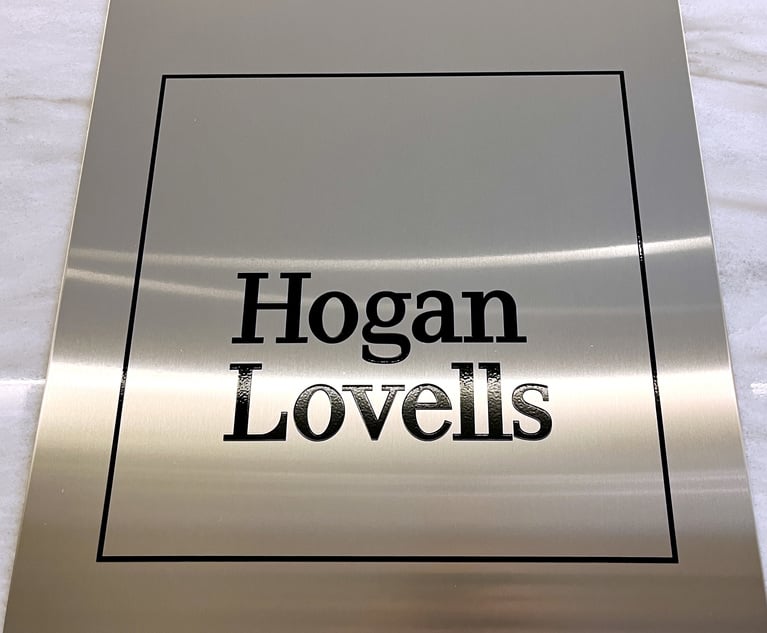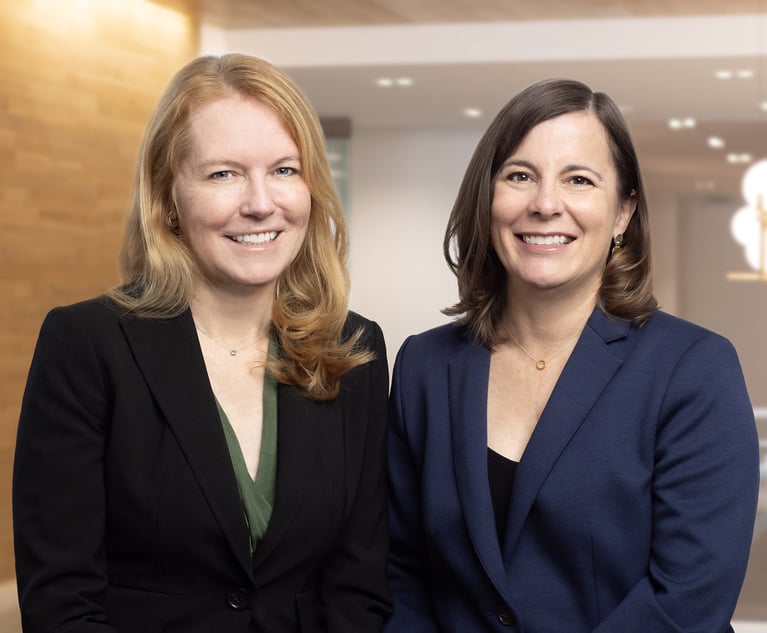Why Litigation Finance Transformed in the 2010s, And What 2030 Might Bring
As recently as 10 years ago, the term "litigation finance" was more likely met with puzzled looks than an understanding nod in the United States.
March 16, 2020 at 06:00 PM
11 minute read
 Jay Greenberg of LexShares (Photo: Courtesy Photo)
Jay Greenberg of LexShares (Photo: Courtesy Photo)As recently as 10 years ago, the term "litigation finance" was more likely met with puzzled looks than an understanding nod in the United States.
While third-party legal financing was prevalent in Australia and the U.K., the American market was emerging from infancy at the start of the decade. Most litigation finance firms were focused on providing pre-settlement loans for personal injury or small commercial claims at the time. Burford Capital, one of the largest funders in the market today, had only existed since 2009, joining Bentham on the nascent commercial side of the market. Few legal professionals could say they had used litigation funding, or even that they understood how it worked.
Times have undoubtedly changed, with litigation finance evolving into a widely-accepted product for U.S. law firms over the last 10 years. A 2019 study found that 69% of surveyed lawyers were "very familiar" with litigation finance—more than double the number of lawyers who gave the same response just two years prior. At this pace, we expect litigation finance awareness, and in turn use, will soon become standard in the legal industry.
Between new entrants and growing incumbents, dozens of litigation funders are active today. We have witnessed the industry's expansion firsthand, with one recent estimate pegging the U.S. market size at $9.5 billion. High investor demand for the asset class, which is typically uncorrelated with the fluctuations of capital markets, should continue to buoy such robust assessments.
Naturally, the surging popularity of litigation finance has raised important questions from legal industry participants. Why, for instance, has third-party funding suddenly boomed in the U.S.? Will new technology and regulations change the way parties seek and provide funding? How will attorneys' funding options evolve as new providers and products enter the market? In sum — how different will litigation finance look one decade from now? We will examine these questions through the lens of recent history, while keeping an eye toward the future.
Changing Attitudes Toward Litigation Finance
For centuries, the medieval doctrines of maintenance and champerty prevented meaningful development of litigation funding in the U.S. Over the last few decades, however, many judicial and governing bodies have repealed these antiquated doctrines and accepted litigation finance, paving the way for its growth.
Courts have generally permitted commercial litigation finance, and currently there are no federal laws that specifically regulate it. Some states do have legislation restricting or preventing third-party funding in consumer-based litigation finance transactions, such as personal injury claims—in which plaintiffs typically receive capital for living expenses. However, bar associations in populous states such as New York, California, Florida, and Illinois have allowed such transactions to proliferate while issuing ethical guidelines for litigation funding. The practice has withstood challenges in these and many other jurisdictions.
In a 2014 commercial dispute between Miller UK Ltd. and Caterpillar, for instance, the U.S. District Court for Northern Illinois held that third-party litigation funding did not violate the state's maintenance and champerty laws. The court found that "there was no intermeddling by the funder" and, furthermore, that the plaintiff (Miller) sought funding to continue litigation that was first initiated in 2010 "without prompting from any funder." Other states that once adopted champerty laws have since rejected them, including Massachusetts (Saladini v. Righellis), Florida (Kraft v. Mason), and South Carolina (Osprey v. Cabana Limited Partnership).
With favorable judicial precedent established, attorney appetites for third-party funding have grown. In 2018, 70% of surveyed lawyers said their law firms or companies have used litigation finance, up from less than 10% in 2012. Among this growing base of participants, the market has also seen an uptick in repeat users who continue using timely, nonrecourse capital to their clients' benefit.
The ability to offer more flexible fee arrangements and overcome the financial burden of bringing a meritorious case to court has appealed to both law firms and corporate legal teams. As a result, growing interest in third-party funding not only relates to single-case investments, but also portfolio financing, where funders provide capital directly to law firms or businesses, typically cross-collateralized by multiple cases.
Litigation finance is now a thriving industry in the U.S. and abroad —one with its own dedicated events and panels. The Information Management Network's second annual litigation finance conference attracted more than 250 attendees in 2019. Numerous legal publications, including Harvard Law School's The Practice, have dedicated full issues to exploring litigation finance topics.
Investors have also flocked to the litigation finance market because of its strong historical returns and because the potential value of a lawsuit is not correlated with macroeconomic trends. The growing appeal has extended to large institutional investors such as the $1.3 billion Hartford Healthcare fund, the University of Michigan, and Harvard University, which have further validated the market by committing capital to litigation funds during the last four years.
Obstacles to Litigation Finance Growth in the U.S.
Litigation funding has been challenged by lawmakers and lobbying groups seeking to curb its rapid adoption.
The Chamber of Commerce, a longtime adversary of litigation finance, has publicly lobbied against its use. In 2017, the group issued a recommendation to require blanket disclosure of litigation funders' involvement in any case, citing concerns over potential conflicts of interest. And Senate Republicans, supported by a lobby that includes AT&T, The Home Depot, and Microsoft, reintroduced the Transparency in Litigation Finance Act (TLFA) in February 2019.
If passed, the TLFA would require disclosure of third-party funding in class action and multidistrict litigation (MDL). However, an MDL-focused subcommittee referred the bill back to the larger group in October, noting that litigation funding affects many case types outside of multidistrict matters. A January update on the TLFA revealed only that a rule change "would remain under consideration" with respect to MDL and class-action cases.
It is unsurprising that well-capitalized, litigation-prone corporations would support the TLFA and similar legislation, considering how they benefit from the status quo. They likely believe that mandated disclosure rules would deter the use of third-party funding—or that it would allow defendants to cast aspersion on plaintiffs' intentions in court. However, their desires for mandated transparency have not slowed the litigation finance sector's overwhelming growth.
No bill or lobbying group has shaped the public discourse around litigation finance quite like the case of Bollea v. Gawker. In 2012, Terry Bollea (more widely known by his professional wrestling stage name, Hulk Hogan) filed a lawsuit against Gawker Media for invasion of privacy, winning a $140 million verdict in 2016. Soon after, Silicon Valley billionaire Peter Thiel publicly revealed that he contributed roughly $10 million toward Bollea's litigation expenses.
Thiel's involvement marked a highly unusual case of interest-based litigation finance, wherein the funder (Thiel) sought "specific deterrence" against the defendant, Gawker — a publication which publicly revealed Thiel's sexual orientation in 2007. His interests were admittedly not financial, as he received no portion of the damages.
Ensuing discussions around the ethics of litigation finance largely focused on this point. Thiel's funding exemplified precisely the type of intermeddling that maintenance and champerty laws were intended to prohibit. Ultimately, the questions Bollea v. Gawker raised about litigation finance primarily served to increase industry awareness, rather than detract from financially-motivated litigation funding.
A More Sophisticated Set of Funders and Products
As litigation finance has grown in popularity, the number of funding providers has also increased. A recent study identified more than 40 active funders in the U.S. market, including specialty funding firms, family offices, multistrategy hedge funds, and private equity firms.
This diversity of providers has increased the industry's ability to fund a wider array of deals, both in terms of size and complexity. Some funders have begun to specialize in certain segments of the market, focusing on factors such as claim type, a specific investment structure, and deal size. Others have expanded their offerings beyond single case investments, providing novel products such as case portfolio financing for commercial and mass tort litigation, law firm funding, and settlement acceleration. It is not uncommon for modern funders to underwrite a broad range of claim types: intellectual property, antitrust, business freezeouts, insurance claims, trust and family disputes, whistleblower claims, post-settlement judgements, international arbitrations and more.
The industry's talent pool has also expanded as funders attract an elite cohort of well-seasoned legal professionals. These are often former litigators who funders hire to expertly assess the risk and value of cases, including those within specialized areas such as patent, copyright and qui tam litigation. In the past few years alone, litigation funding firms have hired attorneys away from the likes of Latham & Watkins, Arnold & Porter, Proskauer Rose, Weil, Gotshal & Manges, Simpson, Thatcher & Bartlett, and Dorsey & Whitney—a clear sign of the industry's desirability as an alternative career option for lawyers.
4 Trends to Watch in the Coming Decade
- Technology. By 2030, effective technology usage will have become a key differentiator both in litigation finance and the legal sector overall. This trend will include the increased use of origination tools, such as LexShares' proprietary Diamond Mine technology platform, as sourcing high-quality cases grows more challenging in the face of increased competition. But it will also include data analytics tools, such as Lex Machina, as attorneys and funders seek better ways to analyze risk, including evaluating damage models, jurisdictions, counsel and beyond.
- Clarity. We also expect courts and regulators to more clearly define the laws that govern litigation finance practices. As a result, it is likely that lobbying groups and industry associations will emerge to represent the varied interests of commercial funders, law firms, and corporate clients. Transaction documents, funding structures, and data utilized by litigation funders will also become more standardized, which could lead to a more efficient market for funding recipients.
- General Counsels. Compared to law firms, corporate legal departments have generally been slower to adopt litigation finance. We anticipate that will change, with more GCs proactively using nonrecourse capital to offset risk, optimize litigation outcomes, and transform their departments into profit centers. Defense-side litigation finance, which has yet to be used in a meaningful way, may also draw the interest of GCs at larger corporations, as they seek to reduce litigation risks and costs.
- Consolidation. As the U.S. litigation finance market becomes more competitive, we expect to see consolidation. The recent merger of IMF Bentham (one of the world's two largest funders) and Omni Bridgeway, completed in late 2019, sets the stage for further M&A activity or joint ventures among the market's more active players. Such transactions could entrench existing investment philosophies or encourage the adoption of newer offerings.
What Do These Trends Mean for the U.S. Legal Sector?
The industry transformation that occurred over the past 10 years is a strong indicator that litigation finance is cementing its place as a mainstay of the modern legal system
In 2010, litigation finance lacked widespread usage and awareness in the United States. Today, as more law firms learn more about the potential value of this burgeoning financial product, many are exploring litigation finance for themselves and, increasingly, working with funders on an ongoing basis.
Looking ahead to 2030, we anticipate that forward-thinking law firms and in-house legal teams will partner more closely with innovative third-party funders. As the potential for another economic downturn looms, firms that proactively embrace flexible financial arrangements will be best positioned to endure future market volatility.
Jay Greenberg is CEO and co-founder of LexShares, Inc., a provider of commercial litigation funding since 2014. Prior to founding LexShares, Greenberg worked in Deutsche Bank's technology investment banking group, where he advised on over $13 billion of mergers and acquisitions and was involved in raising more than $5 billion of equity and debt financing.
This content has been archived. It is available through our partners, LexisNexis® and Bloomberg Law.
To view this content, please continue to their sites.
Not a Lexis Subscriber?
Subscribe Now
Not a Bloomberg Law Subscriber?
Subscribe Now
NOT FOR REPRINT
© 2025 ALM Global, LLC, All Rights Reserved. Request academic re-use from www.copyright.com. All other uses, submit a request to [email protected]. For more information visit Asset & Logo Licensing.
You Might Like
View All
Texas-Based Ferguson Braswell Expands in California With 6-Lawyer Team From Orange County Law Firm
2 minute read

Hogan Lovells Hires Quinn Emanuel IP Litigator in San Francisco

Farella Elevates First Female Firmwide Managing Partners
Law Firms Mentioned
Trending Stories
- 1Reviewing Judge Merchan's Unconditional Discharge
- 2With New Civil Jury Selection Rule, Litigants Should Carefully Weigh Waiver Risks
- 3Young Lawyers Become Old(er) Lawyers
- 4Caught In the In Between: A Legal Roadmap for the Sandwich Generation
- 5Top 10 Developments, Lessons, and Reminders of 2024
Who Got The Work
J. Brugh Lower of Gibbons has entered an appearance for industrial equipment supplier Devco Corporation in a pending trademark infringement lawsuit. The suit, accusing the defendant of selling knock-off Graco products, was filed Dec. 18 in New Jersey District Court by Rivkin Radler on behalf of Graco Inc. and Graco Minnesota. The case, assigned to U.S. District Judge Zahid N. Quraishi, is 3:24-cv-11294, Graco Inc. et al v. Devco Corporation.
Who Got The Work
Rebecca Maller-Stein and Kent A. Yalowitz of Arnold & Porter Kaye Scholer have entered their appearances for Hanaco Venture Capital and its executives, Lior Prosor and David Frankel, in a pending securities lawsuit. The action, filed on Dec. 24 in New York Southern District Court by Zell, Aron & Co. on behalf of Goldeneye Advisors, accuses the defendants of negligently and fraudulently managing the plaintiff's $1 million investment. The case, assigned to U.S. District Judge Vernon S. Broderick, is 1:24-cv-09918, Goldeneye Advisors, LLC v. Hanaco Venture Capital, Ltd. et al.
Who Got The Work
Attorneys from A&O Shearman has stepped in as defense counsel for Toronto-Dominion Bank and other defendants in a pending securities class action. The suit, filed Dec. 11 in New York Southern District Court by Bleichmar Fonti & Auld, accuses the defendants of concealing the bank's 'pervasive' deficiencies in regards to its compliance with the Bank Secrecy Act and the quality of its anti-money laundering controls. The case, assigned to U.S. District Judge Arun Subramanian, is 1:24-cv-09445, Gonzalez v. The Toronto-Dominion Bank et al.
Who Got The Work
Crown Castle International, a Pennsylvania company providing shared communications infrastructure, has turned to Luke D. Wolf of Gordon Rees Scully Mansukhani to fend off a pending breach-of-contract lawsuit. The court action, filed Nov. 25 in Michigan Eastern District Court by Hooper Hathaway PC on behalf of The Town Residences LLC, accuses Crown Castle of failing to transfer approximately $30,000 in utility payments from T-Mobile in breach of a roof-top lease and assignment agreement. The case, assigned to U.S. District Judge Susan K. Declercq, is 2:24-cv-13131, The Town Residences LLC v. T-Mobile US, Inc. et al.
Who Got The Work
Wilfred P. Coronato and Daniel M. Schwartz of McCarter & English have stepped in as defense counsel to Electrolux Home Products Inc. in a pending product liability lawsuit. The court action, filed Nov. 26 in New York Eastern District Court by Poulos Lopiccolo PC and Nagel Rice LLP on behalf of David Stern, alleges that the defendant's refrigerators’ drawers and shelving repeatedly break and fall apart within months after purchase. The case, assigned to U.S. District Judge Joan M. Azrack, is 2:24-cv-08204, Stern v. Electrolux Home Products, Inc.
Featured Firms
Law Offices of Gary Martin Hays & Associates, P.C.
(470) 294-1674
Law Offices of Mark E. Salomone
(857) 444-6468
Smith & Hassler
(713) 739-1250






